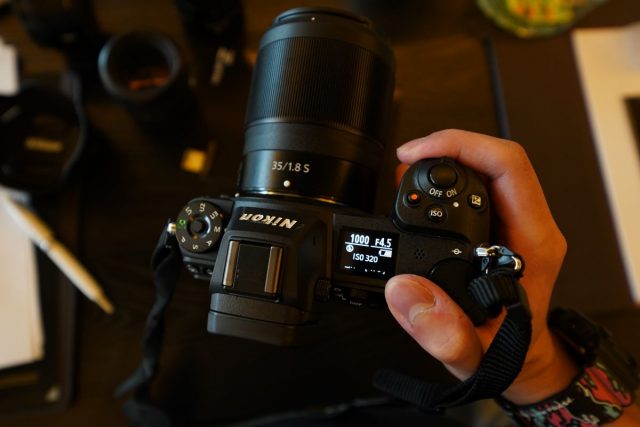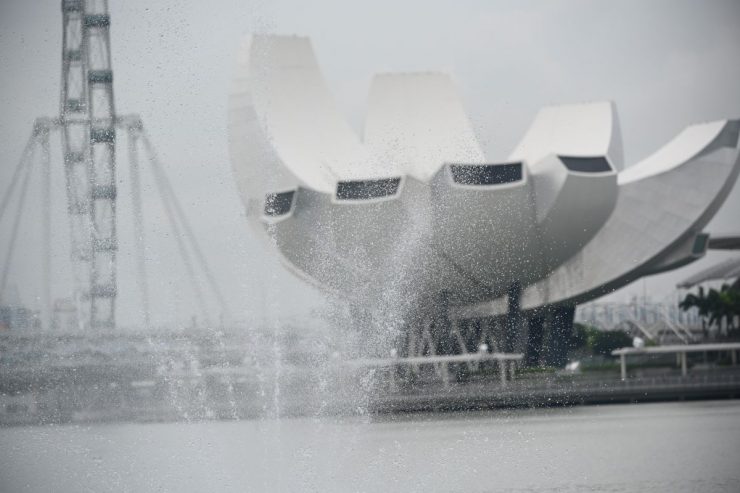We’re currently experiencing an exciting start to camera season, with Canon, Nikon, and Fujifilm all dropping their new contenders into the mirrorless market.
The entries from Canon and Nikon are interesting to watch, due to the fact that it is the two imaging giants first foray into the full frame mirrorless competition.
Having had a go with the new Nikon Z7 and coming from a Sony A7iii user, the first impressions on this camera are nothing but great.
The biggest change that you would notice is the new Z mount, which is so large that the camera looks like it’s been basically built around it. The large 55mm diameter and short 16mm flange distance of the mount give Nikon the leeway to design more interesting glass, but alas they did not launch with anything out of this world. There is the f/0.95 Noct lens coming at the start of 2019, as well as some f/1.2 lenses in the roadmap, something which the older F mount could not handle.
The ergonomics on the Z7 will be very familiar to current Nikon DSLR users. It has a large grip for a secure and comfortable hold (no floating pinkies here a la Sony). The button layout is also similar, but now with more customizable buttons. However, there are two oddly placed custom buttons just on the right of the lens mount, which could prove difficult to reach for most.
The 3.69 million dot EVF along with the touch screen LCD is great, providing enough resolution for you to be confident enough about your shots. The EVF shows no visible lag, with a 60fps refresh rate. Still not as high as the 100fps in the Sony A7iii, but the higher resolution makes up for it. You are also able to select menu options using the touchscreen, as you would on your smartphone. (Sony please do this for your future models.) The only downside is that you are unable to “touch-and-drag” on the touch screen to adjust focus points while using the EVF.
The new focus-by-wire S lenses provide additional functionality with the option to use the control ring (as Nikon calls it) as a dial to change settings, if you were not using it for manual focusing. This is similar to what is seen on the new Canon RF lenses, but it is not an extra ring.
Image quality from the Z7’s 45.7-megapixel sensor is sharp and the new S line lenses provide enough resolving power to use the megapixel count. There is minimal vignetting due to the large lens mount, but F mount lenses via the FTZ adapter will not benefit from this. The gloomy weather during the hands-on session was not the best conditions to test the camera and lenses, but here are some sample photos:
Since the introduction of the D850 and now, the new Z Series, it is clear that Nikon is not planning to leave video professionals behind. With full-frame 4K recording available and 10-bit N-log, it adds to the videographer’s toolbox. The usual I/O ports are seen here; microphone-in, audio-out, HDMI and a USB-C port. The camera can be charged via USB-C, but this is only allowed with the new EN-EL15b batteries. The camera also cannot be operated while charging via USB. Hopefully, future models will improve on this functionality.
Current Nikon system users invested in F mount lenses will not be left in the dust with the FTZ adapter that is launched with the Z Series. The adapted F mount lenses perform as they do natively, with full AF compatibility available with all Nikon AF-P lenses.
The only gripe as of now is the Z7’s use of a single XQD card slot for storage options. While the XQD format is newer and much faster, there are not many consumers who are using XQD cards. As the industry moves toward the CF Express format, hopefully more cameras will adopt XQD. The single card slot is also a purchase barrier for professionals who want to record to two cards for redundancy in the case of commercial and wedding work.
Overall, the Nikon Z7 feels like a great camera and a good start for Nikon’s full-frame mirrorless system. It does not do anything revolutionary but feels more like a refinement of current mirrorless systems in the market. It has its kinks to iron out, but as a first-gen model, the Z7 checks most of the boxes consumers were expecting from Nikon. Stay tuned for our full review where image and video quality will be tested!
Local pricing and availability is currently unavailable, but the Nikon Z7 retails for US$4000 with the Z 24-70 F4 S kit lens.
Key Specifications
| 45.7MP BSI-CMOS sensor |
| In-body 5-axis stabilization (rated for 5 stops) |
| 493 PDAF points with 90% horizontal and vertical coverage |
| ISO 64-25,600 (expandable to 102,400) |
| Up to 9 fps shooting (JPEG and 12-bit Raw) |
| 3.69m-dot OLED viewfinder |
| 2.1m-dot tilting touch LCD |
| OLED top plate display |
| Single XQD card slot |
| UHD 4K capture up to 30p |
| 10-bit 4:2:2 N-Log output over HDMI |


























